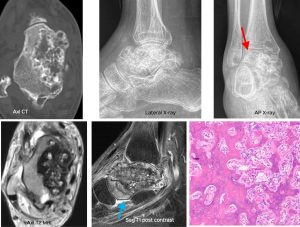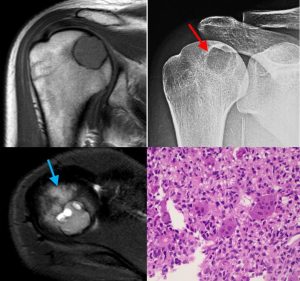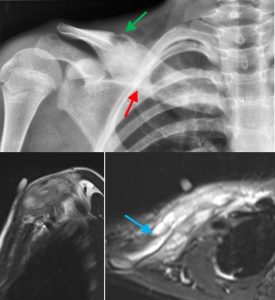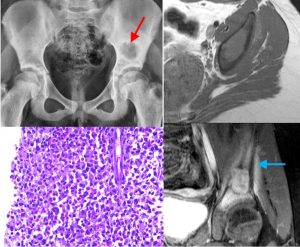The Concept of Benign Aggressive Bone Tumors
The Concept of Benign Aggressive Bone Tumors
Bone tumors are best evaluated with a combination of plain radiographs and MRIs. There are various signs and rules that differentiate benign from malignant lesions and help us arrive at a specific diagnosis.
One such is the concept of the “benign aggressive” lesion. Clinically, these are defined as benign tumors with locally aggressive behavior. Radiologically, these are defined as tumors that appear benign on X-rays but aggressive on MRI with marrow and perosseous edema, effusion and periosteal reaction, but without a soft tissue mass.
The following conditions present as “benign” on X-rays and “aggressive” on MRI. They can be further differentiated based on age, appearance and location
- Osteoid osteoma / Osteoblastoma (Fig. 1)
- Chondroblastoma (Fig. 2) / Chondromyxoid fibroma
- Langerhans cell histiocytosis (Fig. 3)
- Benign tumors with fractures
- Chronic nonbacterial osteitis (Fig. 4)
- Giant cell tumor / Aneurysmal bone cyst
These tumors should be differentiated from infection / osteomyelitis, which can simulate “benign aggressive” lesions superficially.
Points:
- Bone tumors or focal bone lesions can be difficult to diagnose and characterize
- Many signs and rules help
- Lesions that are “benign” on X-rays and “aggressive” on MRI are few and narrow the differential diagnosis.
[/vc_column_text]




